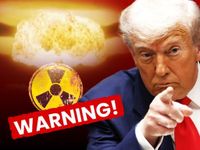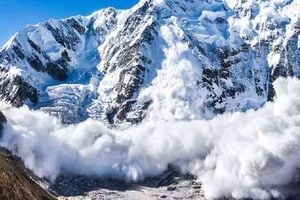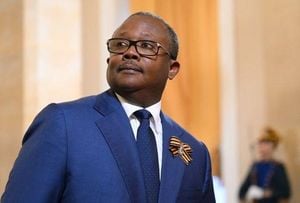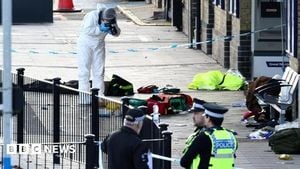President Donald Trump’s recent announcement that the United States will resume nuclear weapons testing has sent ripples through the international community, reigniting debates about arms control, global security, and the specter of a new nuclear arms race. The decision, made public on November 1, 2025, via Trump’s Truth Social platform, marks a dramatic reversal of a 33-year U.S. moratorium on nuclear explosive testing. It comes at a time of heightened global tensions and just hours before a high-stakes meeting with Chinese President Xi Jinping in South Korea, underscoring the gravity and timing of the move.
In his post, Trump stated, “Because of other countries’ testing programs, I have instructed the Department of War to start testing our Nuclear Weapons on an equal basis.” He added that the process would begin immediately, raising urgent questions about the nature and scope of the planned tests. Would these involve actual nuclear detonations or merely the testing of delivery systems? The ambiguity has only fueled speculation and concern among policy experts and foreign governments alike.
According to BBC, Trump’s directive was motivated by what he described as advances in Russian and Chinese nuclear capabilities. Specifically, Trump cited recent Russian tests of a nuclear-fuel powered intercontinental ballistic missile (ICBM) with an unlimited range, as well as an underwater drone torpedo featuring similar technology—capabilities that, as reported by the Observer Research Foundation, no other nation, including the U.S., currently possesses. The president argued that to maintain deterrence and credibility, America must not only possess the largest nuclear arsenal but also ensure its weapons are credible and tested.
This rationale, while not new in the annals of nuclear brinkmanship, has nonetheless alarmed many. Jamie Kwong, a nuclear policy fellow at the Carnegie Endowment for International Peace, told BBC, “We’re at a very concerning moment where the US, Russia, and China could enter an arms race.” Darya Dolzikova, a senior research fellow at the Royal United Services Institute, echoed these concerns, suggesting that Trump’s comments, even if not immediately operational, contribute to rising nuclear risks globally.
The timing of the announcement is particularly significant. The last remaining treaty limiting U.S. and Russian nuclear arsenals, New START, is set to expire in February 2026. According to the Stockholm International Peace Research Institute (SIPRI), Russia currently holds 5,459 nuclear warheads, the United States 5,177, and China a comparatively modest 600. The expiration of New START could leave the world’s two largest nuclear powers without any formal constraints for the first time in decades, further destabilizing an already precarious balance.
Reactions from other major powers have been swift and pointed. A Kremlin spokesman warned, “If someone departs from the moratorium, Russia will act accordingly,” signaling that Moscow could resume its own testing if the U.S. breaks with decades of restraint. China, meanwhile, reiterated its hope that the United States would adhere to the Comprehensive Nuclear-Test-Ban Treaty (CTBT), a United Nations agreement adopted in 1996 to ban all nuclear explosive tests. While the U.S. has signed the CTBT, it has never ratified it, meaning it is not legally bound by its provisions—though, as BBC and Observer Research Foundation point out, any resumption of testing would flout the spirit of the treaty and global non-proliferation norms.
But what exactly is at stake with nuclear testing? As explained by Observer Research Foundation, a nuclear test is typically the detonation of a nuclear device—either in the atmosphere, underground, or underwater—to verify weapon design, yield, and reliability. Such tests are also potent political signals, demonstrating a nation’s resolve and technological prowess. The last U.S. nuclear test, for instance, was conducted underground in Nevada in 1992. Since then, advances in simulation and computer modeling have largely replaced the need for live detonations, though some experts argue that only actual tests can fully guarantee a weapon’s performance under real conditions.
Hans Kristensen, director of the Nuclear Information Project, noted that the world’s nuclear arsenals have actually increased over the past five years—a trend not seen since the Cold War. “We’re seeing a significant increase in nuclear warheads, which is alarming,” Kristensen said, underscoring the growing risk that the world may already be in the early stages of a new arms race.
The potential consequences of resuming nuclear testing are wide-ranging and deeply troubling. Daryl Kimball of the Arms Control Association warned that such a move “would be historically detrimental to international security,” potentially triggering an unchecked arms race involving the U.S., Russia, and China. The erosion of arms control frameworks, such as the CTBT and New START, could unravel decades of painstaking diplomatic progress, weakening the global non-proliferation regime and encouraging other nations to pursue or resume their own testing programs.
There are also significant technical, economic, and humanitarian costs to consider. Restarting full-scale nuclear testing is both expensive and logistically challenging, likely requiring the construction of new test sites or the refurbishment of old ones. While modern tests are typically conducted underground to minimize fallout, the risk of radiation release and environmental damage remains. The history of nuclear testing is littered with examples of long-term harm to human health and the environment—memories that remain fresh in the minds of many communities worldwide.
Beyond the technical and diplomatic ramifications, Trump’s decision to resume testing is also seen as a political message. As noted by the Observer Research Foundation, the move is intended to project strength, influence ongoing diplomatic negotiations—particularly with Russia—and challenge the existing global nuclear order. In a world already beset by conflicts in Ukraine, persistent tensions between India and Pakistan, and the unresolved nuclear standoff with Iran, the resumption of U.S. nuclear tests could inject a new level of uncertainty and risk into international affairs.
Ultimately, experts warn that a new nuclear arms race may already be underway, driven by increasing military competition and a breakdown in arms control agreements. As global leaders navigate these fraught waters, the stakes could hardly be higher. The world stands at a critical juncture, with the decisions made in the coming months likely to shape the trajectory of international security for years to come.
As the dust settles on Trump’s controversial announcement, one thing is clear: the debate over nuclear testing is far from over, and the risks it poses—both immediate and long-term—are impossible to ignore.




